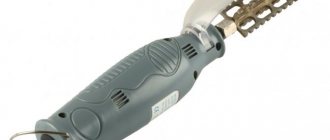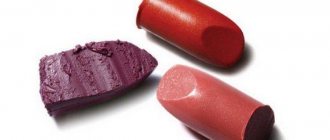Brick stoves, fireplace portals, boiler equipment - any of these devices has a pipe for removing smoke from the room. And if you don’t take care of your chimney, you can run into serious problems. For example, with smoke in indoor spaces when a sauna stove or fireplace is operating in the house. Soot deposited on the walls of the chimney can both interfere with the removal of smoke and provoke a fire. In order not to take risks, you should not only understand how to clean the stove without disassembling it, but also systematically practice it.
Causes of soot and dirt formation
Smoke, in addition to decay elements in the form of a gaseous substance, contains mechanical microparticles that contaminate pipes. Soot accumulates and forms a layer of black plaque. Water vapor causes it to harden. Gradually the passage becomes clogged. Soot clogs channel bends, narrow passages, and any surfaces of the chimney outlet. Causes:
- violation of the rules for installing a stove or fireplace portal;
- improper installation of chimney components;
- low quality building materials are cracked;
- the smoke exhaust system is clogged with debris;
- the chimney is not equipped with an umbrella.
All this affects the reduction of cravings. Accumulated soot quickly narrows the passage, which negatively affects the functioning of fireplaces and stoves. How quickly soot accumulates depends on the design of the stove, the type of fuel used, and the moisture level.
When should you start cleaning?
Regardless of the quality of the stove, the pipe will have to be cleaned one way or another. When the masonry of the structure is carried out correctly, you can do without cleaning for many years, especially if you use dry fuel and do not burn household waste in the firebox. Freshly cut firewood must sit for at least 18 months before use. The type of wood raw material is also important.
On a note!
When using pine and spruce, cleaning will be required faster, since the species are resinous.
You should think about whether the chimney is clogged when you notice dark smoke from burning fuel. If hardwood or pellets are used, the smoke is clear and often whitish. If it darkens, it means soot and other contaminants have accumulated.
Another signal - the wood does not crackle when burned, the fire becomes dark, orange-colored. If such signs appear, you should call a specialist or clean it yourself. There are several effective ways to save on calling a chimney sweep.
How to clean mechanically
Before cleaning the chimney pipe of dirt, it is important to evaluate the quality of the roof and the reliability of the chimney. If it is located low above the roof or a ladder can be placed nearby, cleaning can be carried out directly from the roof, through the upper part of the chimney. For this:
- take a special brush;
- suspended on a rope;
- put into a pipe;
- begin to move it up and down, removing accumulated soot.
During mechanical cleaning, the main contaminants will fall down, but something will also fly through the top. Therefore, before cleaning, it is recommended to wear protective clothing, gloves, goggles and a respirator. Gloves will also protect your hands from cuts from the rope.
On a note!
To collect everything that has poured down the pipe, you should place a bucket or any other container below. An assistant who promptly empties what you have collected will also be beneficial.
Devices for cleaning the chimney can be purchased at hardware stores and specialized sales points for stove products. If you want to make a cleaner yourself, you should attach a centered metal ball to the cleaning brush. This way the cable will pass through the chimney more easily and the quality of cleaning will improve significantly. It is not recommended to use dumbbells or wrenches as an alternative. These parts can clog the pipe by simply getting stuck in it, and then it will be necessary to disassemble the chimney, and no one needs this. Videos on how to clean a pipe can be found on the Internet.
From paint
If the brick wall was painted, but began to peel off over time, then you need to urgently remove the old paint. The modern method of sandblasting walls is often used. But this may damage the material.
Therefore, it is best to adhere to the following recommendations:
- Perform initial paint removal.
- Get rid of fungus.
- Perform chemical treatment.
- Perform secondary paint removal.
First you need to remove the loose layer of paint. All visible wall surfaces on which peeling paint is visible are treated with a spatula. Then the wall is carefully brushed to remove dust.
The second stage is getting rid of the fungus. A special solution is prepared (bleach and water in a ratio of 3:1) and applied to the wall with a brush. After this, rinse thoroughly with water.
The prepared solution is applied to the wall with a spatula and left for 2 days. After this, warm water from a hose (under high pressure) removes the solution from the surface along with the old paint.
If you need to clean a wall in your house, then while applying the solution to the walls, strips of paper are glued to it. It is then removed from the surface along with the paint.
Instead of a homemade solution, you can purchase a special solution in the store. To breed it you need to follow the instructions.
Chemical cleaning
If there is no desire or opportunity to use a brush, you can use a chemical method as a preventive measure to protect against soot and soot deposits. The principle of its operation is a chemical-physical action on the walls of the chamber inside the chimney.
The elimination of chemical contamination occurs by burning a briquette or box with special preparations that react with dirt deposited on the pipeline, making it brittle. The procedure is recommended to be carried out every 45-60 days. This method is also recommended before cleaning yourself.
Stove cleaners are produced in powder and briquette forms. Before starting, you should heat the stove well and place the purchased chemical into the heated firebox. As it burns, it will soften the soot on the walls of the pipeline, and it will fly off naturally, without mechanical impact. For example, anyone can now clean the “Varvara” sauna stove from soot without disassembling it. To do this, summer residents and people living outside the city permanently use:
- granular product "Komichek";
- firewood "Chimney sweep";
- powdered products “Jolly Chimney Sweep” and the like.
The chemicals act in approximately the same way. The main thing is to remember that after using them, be sure to ventilate the house and the firebox well, and clean the stove or fireplace from ash.
Complete cleaning of the apartment
For cleaning to be successful, the apartment must be cleaned step by step and correctly.
You need to start with dry cleaning of distant rooms and finish it in the bathroom and toilet. Most of the soot accumulates at the top as smoke and fine particles rise upward.
Open all the windows in your house or apartment. This must be done so that the smell of smoke disappears. If there was a fire, all damaged items must be taken outside. Remove visible debris. Curtains and carpets are removed and taken outside. They will need to be shaken well and washed. Alternatively, you can also take it to the dry cleaner.
After cleaning up the trash, start cleaning the ceiling and walls. If there is burnt wallpaper on the walls, remove it with a staple. Wash windows, window sills, windows and doors thoroughly.
If there was a fire in the room, it is better that all surfaces remain clean after it, otherwise, after repairs, a burning smell may persist.
Now take a broom and walk it over the entire surface of the house. This way you can collect small soot particles. Next, use a vacuum cleaner. Walk it over all surfaces to collect the smallest particles of dirt. Finally, carry out wet cleaning, adding detergent to the water.
Change the water more often to prevent soot residue from settling back on the surface. It is best to throw dirty water outside if possible. The main thing is not to rush during the work process, otherwise if you miss something, you will need to start all over again.
How to clean the inside?
Many people are interested in knowing how to clean a stove pipe when it is not possible to get to it on the roof. Suitable for cleaning the inside of a house or bathhouse. For this purpose, devices have been developed - brushes on flexible rods. You can also buy them in construction markets.
Experts sometimes use a vacuum cleaner to clean the stove. It is better not to try this on your own: standard home vacuum cleaners will not help here. They have little traction and, in addition, soot in them can cause an electrical appliance to catch fire.
Getting to the chimney to clean the fireplace portal without disassembling it is quite simple. When cleaning a stove or boiler is required, you must first remove the glass collecting condensate from the pipe. Through this hole you can insert a brush into the pipeline and clean it by moving it back and forth. Soot and dirt will fly down and be ventilated out through the hole in the pipeline. The work is dusty, so you should wear a protective mask, respirator, suit and gloves when cleaning.
On a note!
When there are no condenser cups or service hatches, you can do without disassembling the smoke exhaust system. You can clean it using traditional methods.
Video description
How vacuum cleaning of chimneys takes place is shown in the video:
Having finished the main work, remove the remaining soot in the cleaning holes using small scoops and brushes, and clean the firebox with the ashpit again. You can also use an old household or construction vacuum cleaner to prevent small particles of dirt from flying around the house.
Since it is very difficult to blindly clean a pipe in a bathhouse or residential building, it is advisable to check the quality of the work using mirrors tied to a cable. With a long chimney, this trick will not work due to the lack of light inside, but portable endoscope video cameras with a long cord that connect to a smartphone or other device via a USB portal can come to the rescue. Professionals have special equipment for quality control.
A household USB endoscope allows you to look into the most inaccessible places Source vupe.ru
Traditional methods
The easiest of the unconventional methods of cleaning a chimney from contaminants is to heat the stove with aspen wood. This type of wood produces a powerful flame when burned, burning away any deposits in the chimney. The technique is simple, but we must not forget about precautions. If there is a lot of soot in the pipe, it may explode.
You need to stack aspen firewood not in a cold one, but in an already heated brick stove.
The most current recommendation on how to clean stoves using traditional methods is to use potato peels. But you will need a lot of potato peelings, at least 10 liters, well dried.
When the peel is prepared, it is sent to a heated firebox and wait until everything burns out. The gases formed during this process will soften the soot on the walls of the pipeline, and it will begin to fly out of the chimney. Potatoes can be replaced with 0.5 kg of table salt - the pipes will also be cleaned. After a single application of salt, dirt particles will fly out within several days until completely cleansed.
On a note!
If you don’t want to dry the peels, you can use raw ones. However, then it should be thrown into the firebox in batches so as not to lower the temperature in the furnace.
Why does the chimney become dirty?
Clogging of the smoke channel occurs during the combustion of fuel, when vapor and solid products are released from it and carried away by the flow of furnace gases. But under certain conditions they do not fly out completely into the chimney. This happens under the following circumstances:
- Burning wet wood. Fuel with a moisture content above 24% contains an increased amount of intracellular moisture, which actively evaporates as it burns. These vapors rise along with the stove gases into the chimney. In a cold or insufficiently heated channel, they mix with cooled air, as a result of which condensation settles on its walls. And this is not just water, because the vapor contains oxidation products, so the sediment is acids. They do not just flow down the walls of the pipe, a significant part of them lingers on the walls, depositing solid combustion products from the smoke, and carbon deposits form on the walls, reducing the cross-section of the smoke channel.
When raw wood burns, it releases excess moisture, which ultimately settles on the walls of the chimney and becomes a source of soot. - Use of prohibited fuel. Of course, there are no direct contraindications, but wood processing waste, consisting of wood with fillers in the form of binders, cannot be used to fire the stove. Such materials include waste plywood, chipboard and fiberboard. Such fuel releases a large amount of tar in the smoke, which intensively settles on the walls of the chimney. Resinous wood - pine or spruce - also has a similar effect.
- Cold chimney. Moisture condensation on the walls occurs at a certain temperature in the channel. This state of gases is called the “dew point”. If such conditions are created inside the smoke channel, condensation settles on its walls in an active mode, provoking the accumulation of soot. To get rid of this phenomenon, you need to reliably insulate the pipe, reducing its heat transfer into the surrounding space. After this, the chimney will warm up, and the dew point will rise higher, leaving the space inside the pipe.
- Presence of horizontal pipe sections. The largest amount of soot forms on the bends of the chimney, so it is better not to use this installation method unless absolutely necessary. If another solution is not possible, cleanouts must be installed on the rotary elbows, which can be opened and free the elbow from soot deposits.
If you need to make a horizontal section on the chimney, the transition to it must be done using an outlet with a special hole for cleaning (revision) - Rough walls of the smoke channel. When constructing a chimney, it is necessary to mop the channel to improve the quality of its surface. Soot is deposited primarily on the uneven surfaces of the chimney.
- Fire the stove with household waste. Such fuel is even more destructive to the chimney than the use of plywood and other scraps. It always contains remnants of plastic or polyethylene packaging, which release a lot of chemicals when burned. In this case, the chimney is guaranteed to become overgrown with soot faster than the heating season ends.
Cleaning Frequency
The stove, fireplace, and boiler must be cleaned regularly. The number and frequency of events depends on the following factors:
- frequency of use of the heating structure;
- type of fuel used;
- variety and preparedness of the tree.
For example, when a fireplace portal is heated with high-tar wood or household garbage is periodically burned in it, the pipe quickly becomes overgrown with soot and dirt. And if the stove is used only 10 times per season, a lot of soot will not accumulate in it.
On a note!
When a person or family lives in a house permanently and heats twice a day, cleaning is required at least once every six months: before the heating season and at the end.
If this rule is ignored, sad consequences are possible: from additional expenses for calling a technician or disassembling the stove to a tragedy with an explosion.
Prices for chimney sweep services and where to find them?
The profession of a chimney sweep is again in demand due to the fact that recently cases of fires in private homes have become more frequent. And they are connected precisely with the contamination of the chimney, as well as with its improper design.
It just seems that everything is easy. In fact, this profession takes several years to be trained. Where can you find such masters? This is where the Internet comes to the rescue. Similar announcements can be found on bulletin boards. You need to search in the services section for your region.
Another way is to contact a furnace equipment service company. Some of them provide similar services.
Prices vary depending on the specific region and the popularity of the specialist. On average, a full range of services will cost 1000 rubles per 1 m2 of cleaned pipe. Vacuum cleaning of ovens will help you get rid of soot and dust.
Prevention
Without preventative maintenance, it is impossible to achieve proper operation of the furnace. The reasons for frequent blockage of the smoke channel with soot and other contaminants are:
- use of raw firewood;
- burning plastic waste, PE, chipboard and plywood residues in a stove;
- lack of traction;
- use of spruce or pine firewood.
The best way to clean it is to follow the recommendations for using the heating system. It is important to dry the firewood well before putting it into the firebox: this way, even resinous types of wood will not cause serious harm. Do not heat with plywood boards and other building materials containing glue or varnished ones. Such residues should only be thrown into a landfill, and not burned at home.
By listening to the recommendations of specialists, you can forget about cleaning for at least six months. Today it is not necessary to call a chimney sweep and pay him. By using one of the pipe cleaning methods, you can both save money and keep your stove in order.
The stove asks me to wash myself, what should I do?
Removing smoke from the stove is a dubious pleasure. It is better to choose the fastest method: scrub off fresh fat, not frozen fat. It is enough to wipe the dirty stove with lemon, so as not to do this with ammonia. You can replace expensive fruit with citric acid.
Scraping off frozen plaque is a very labor-intensive task, especially if drops of grease have gotten between the glasses. In modern models, the inner glass of the door is removed. It's easy to clean and tidy up.
But glass baking trays are treated with ammonia if an unpleasant residue remains after washing without chemicals. A heavily contaminated surface requires a lot of effort.











